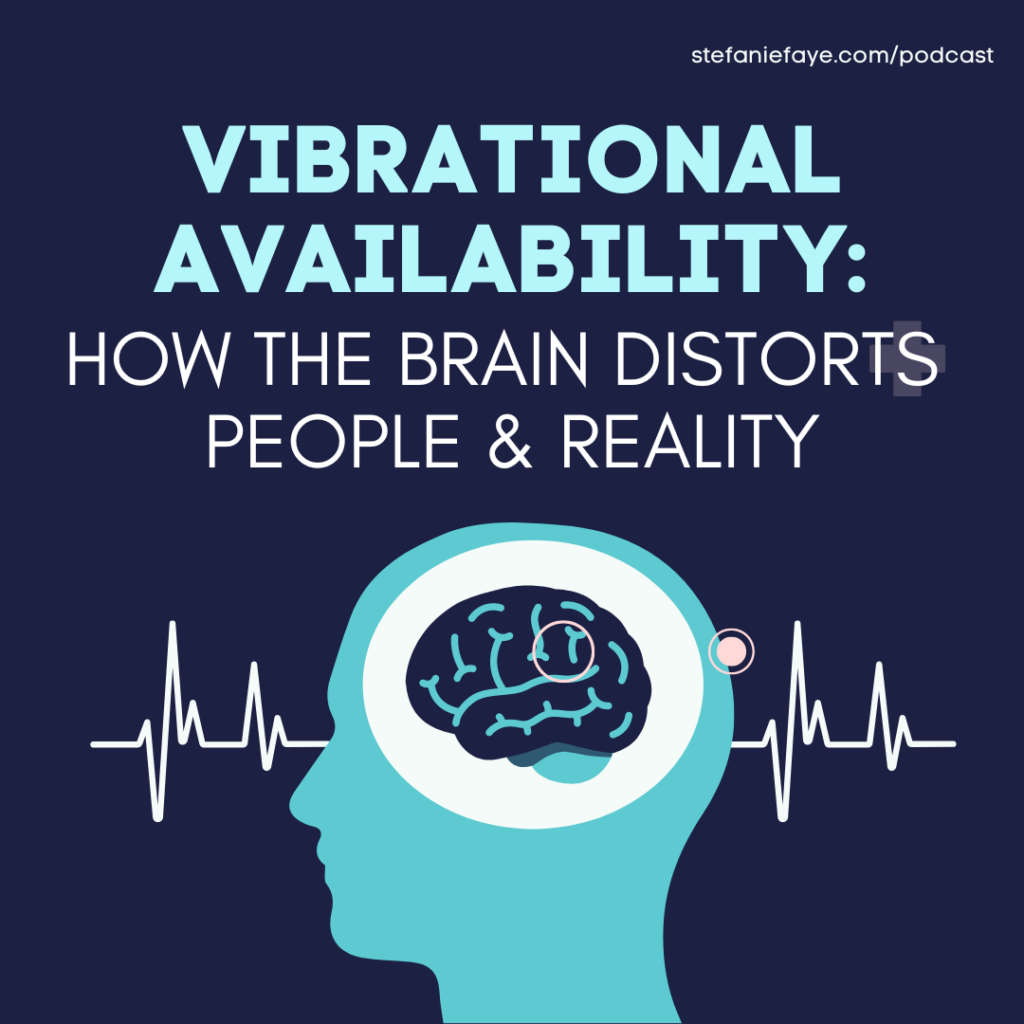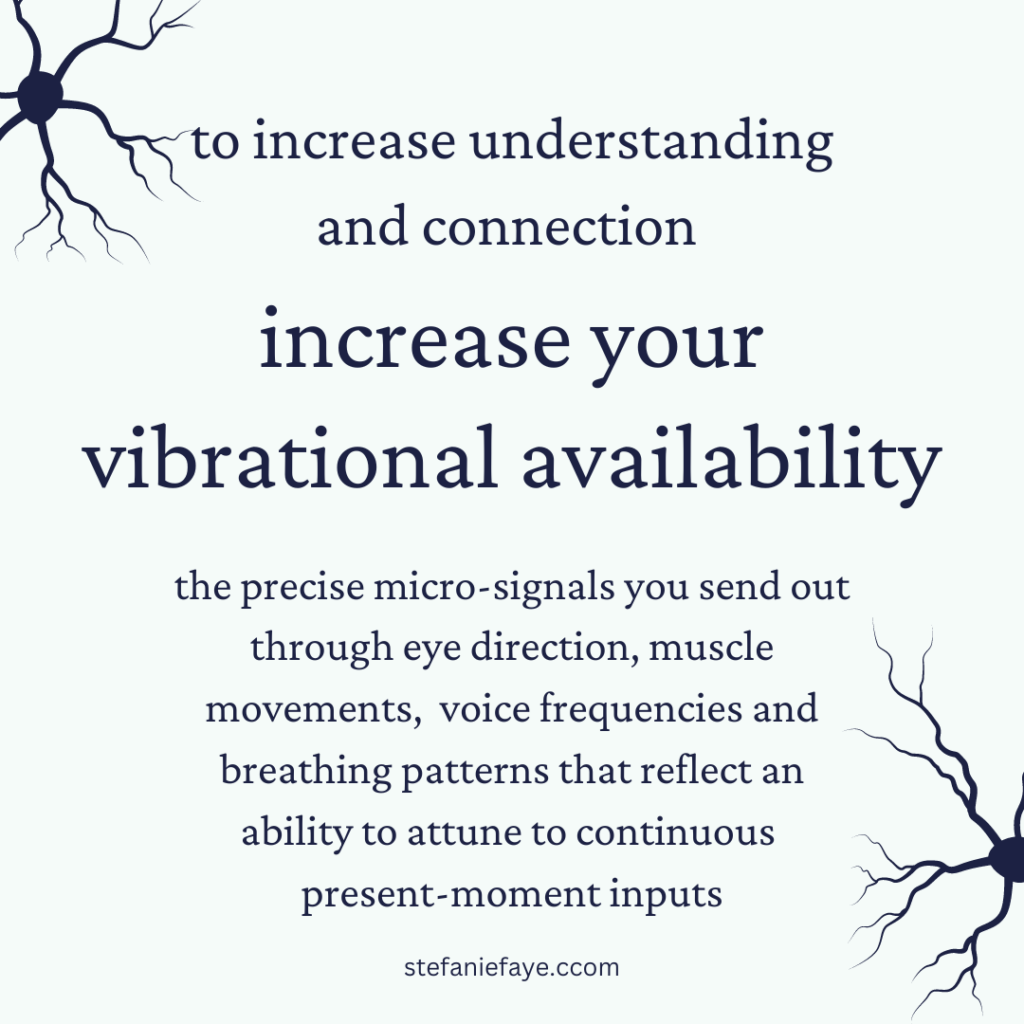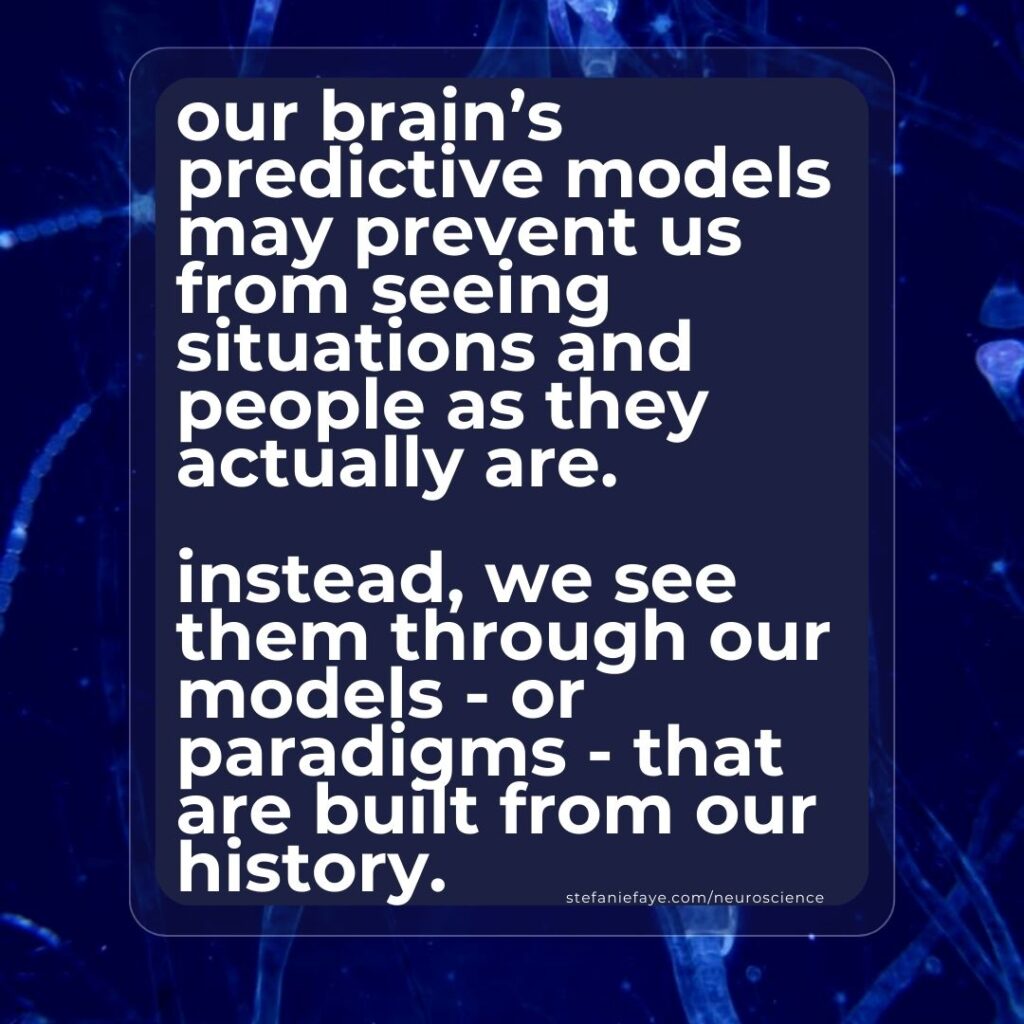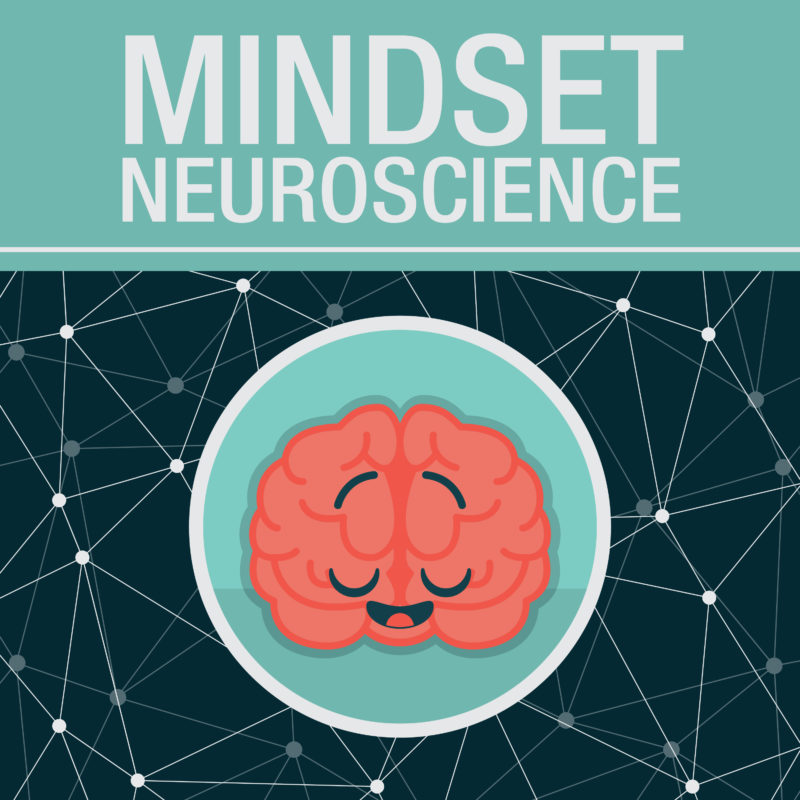The brain, more than anything, is a predictive system. It conserves energy by attempting to predict - rather than truly understand - what is in front of it.
When information is missing, it fills in the blanks based on its past. It seeks out cues that confirm its predictions and distorts or ignores anything that could contradict what it already predicted to be true.
Our earliest experiences in social settings, including family systems, may influence these predictive models in ways that negatively impact our potential.
The mind-brain-body creates algorithms and predictive models by using our PAST to make assumptions about what’s happening NOW.
The brain is doing this to be an efficient problem-solver. Algorithms and predictive models provide a logic or series of if-then sequences and associations we can apply instead of having to calculate every single possibility.
The problem with this efficiency, is that these predictive models may prevent us from seeing situations and people (including ourselves) as they actually are. Instead, we’re seeing them through our models - or paradigms - that are built from our history.

To listen to this as an audio article (with more in-depth ideas of how to increase your Vibrational Availability), listen on
The assumptions we make about a person are really just how that person filters through our predictive models.
Most of your predictive models all started with the very beginning of you and your first caregivers. How they reacted and responded to you.. to your cries, your giggles, your demands, your distress. All that started a predictive modeling process for you.
You started to predict human behavior based on the very small sampling of data you got from only a few select people in your world. over and over again for the first years of your life.
Many of the predictions and computations your brain is using NOW were created back THEN.
And the interactions from your past were affected by the stress, context, and maturity of your caregivers, and how they were able to respond to you. (which was also affected by their caregivers, etc.)
Because we each had different histories, we all have different filters. My senses are going to filter how I perceive that person based on all of the associations I have from my past experiences. And so will yours.

If we interact with a person through one of our filters, there's a good chance they will react to our predictive mechanisms - which can make them feel less understood.
To expand beyond the filters that distort our perception, we must find ways to stay open to the actual, ‘live data' of that situation or person - in their most evolved state (their most evolved state occurs during the very precise moment they are in front of you).
This means staying as attuned and engaged with present-moment-inputs. I call this Vibrational Availability
It means opening our senses and mental capacities to notice more than we usually notice. For example:
- Use your middle ear muscles to tighten your attention onto really hearing the words they are saying, rather than jumping to what your response is going to be (all based on filters from your past)
- Use your eyes muscles to engage your attention to really see the expression on their face and sensing the tone of their voice (without automatically labeling their intentions or feelings)
- Use your internal beam of awareness (and systems of the brain such as the medial prefrontal cortex) to become more conscious of your own signals: tone of voice, posture, facial expressions - and understand that the signals you send out affect how that person responds to you
- Use your mind's ability to imagine and simulate the past family and social interactions and historical context that person has experienced and how those have influenced their viewpoint and responses.
This gives our brain more sophisticated and fine-grained data to expand its circuitry, which then makes the mind-brain-body more flexible to find ways to interact with someone and explore who they are now, at this moment.
In an upcoming post, I'll go into how we can disrupt these patterns for our own negative self-talk (you can also check out Re-Wiring Your Brain' Inner Critic for more on this topic)
To listen to this as an audio article (with more in-depth ideas of how to increase your Vibrational Availability), use the media player here, or listen on
(if you love this content, please let me know by leaving a review on Apple or Spotify! This helps get the word out to more people who may not realize how neuroscience can help them 🙂
*please note that all suggestions and exercises offered in videos, articles and podcasts on this website are not offered as a substitute for professional mental health care or medical care and are not intended to diagnose, treat or cure any mental health or medical conditions.


